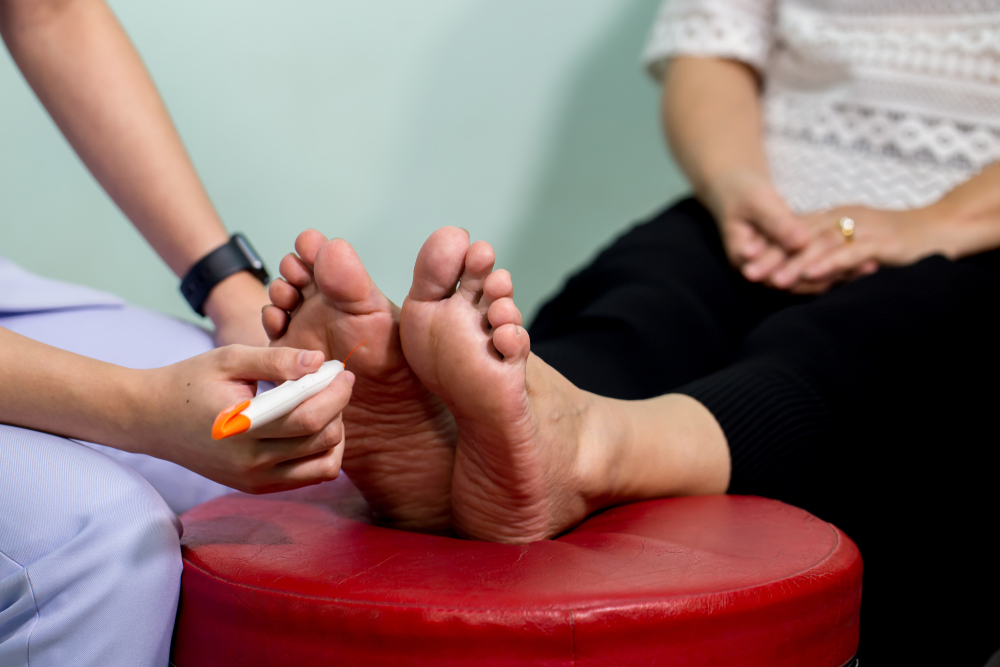Diabetic wound healing is a significant concern for millions of people living with diabetes worldwide. Diabetes can impair the body’s natural ability to heal wounds, leading to complications that range from infections to, in severe cases, amputation. Understanding the mechanisms behind slow wound healing in diabetic patients and adopting strategies for effective management is crucial for improving quality of life and reducing risks.
Why Diabetes Affects Wound Healing
The primary reason diabetes affects wound healing is due to high blood sugar levels (hyperglycemia), which can cause long-term damage to blood vessels and nerves. This damage can impair circulation and reduce the amount of oxygen and nutrients reaching the wound site. Additionally, the immune system is weakened, which makes it harder for the body to fight off infections, a common complication in diabetic wounds.
Diabetic wounds, especially on the feet, are called diabetic foot ulcers (DFUs). These are slow-healing, open sores or wounds that, when untreated, can lead to serious infections.
Key Factors Contributing to Slow Wound Healing in Diabetes
1. Neuropathy (Nerve Damage): Over time, high blood sugar levels can damage nerves, especially in the extremities, like feet and legs. Neuropathy may prevent a diabetic person from feeling pain or discomfort from a wound, causing it to go unnoticed and untreated.
2. Poor Circulation: Diabetes often causes a narrowing of the blood vessels, especially in the lower extremities. This reduces blood flow to the affected areas, limiting the oxygen and nutrient supply necessary for proper healing.
3. Impaired Immune Response: Diabetes suppresses the immune system, reducing the body’s ability to defend against infections. This makes it harder for wounds to heal and increases the likelihood of infections developing.
4. Infection Risk: Due to the weakened immune response and poor circulation, diabetic wounds are at a much higher risk of becoming infected. Once an infection sets in, it can spread quickly and become difficult to manage.
Stages of Diabetic Wound Healing
1. Inflammatory Phase: When a wound occurs, the body naturally initiates inflammation to protect the wound from infection. In diabetic patients, this phase may be prolonged or ineffective, preventing the wound from moving into the next stages of healing.
2. Proliferative Phase: During this phase, new tissue begins to form, including the development of new blood vessels and collagen. In diabetics, this phase can be slow, and the tissue may not form properly due to impaired circulation.
3. Maturation Phase: In the final stage of healing, the wound contracts and strengthens. In diabetic patients, poor blood flow and other complications can delay this phase, leaving the wound open and vulnerable for longer.
Tips for Diabetic Wound Management
Proper wound care can significantly improve outcomes for individuals with diabetes. Here are key steps to manage and support wound healing:
1. Monitor Blood Sugar Levels: Keeping blood sugar within the target range is critical to improving circulation and supporting the body’s ability to heal. Proper diabetes management can prevent wounds from becoming chronic.
2. Daily Foot Inspections: Since many diabetic wounds occur on the feet, daily inspection is essential. Look for any signs of blisters, cuts, redness, or swelling, and seek medical attention at the first sign of a wound.
3. Prompt Wound Care: If a wound is discovered, it should be cleaned and dressed properly to prevent infection. Consulting a healthcare provider for proper dressing and care techniques is advised.
4. Regular Doctor Visits: Routine check-ups with a healthcare provider or podiatrist can help catch potential issues early and provide guidance for diabetic foot care.
5. Avoid Pressure on the Wound: Reducing pressure on a wound, especially in the case of foot ulcers, can promote healing. This may involve wearing special shoes, insoles, or using other protective devices.
6. Healthy Diet and Hydration: Proper nutrition supports the body’s immune system and wound healing processes. Ensure adequate intake of vitamins like C and E, which are crucial for skin repair, and maintain good hydration to promote cellular function.
Advanced Treatments for Diabetic Wounds
If standard wound care does not promote healing, advanced treatments may be necessary. These can include:
1. Debridement: This involves removing dead or infected tissue from the wound to stimulate healing.
2. Hyperbaric Oxygen Therapy (HBOT): This treatment involves breathing pure oxygen in a pressurized environment to increase oxygen levels in the blood and promote faster healing of wounds.
3. Skin Substitutes and Growth Factors: Specialized skin grafts and growth factors may be applied to diabetic wounds to stimulate tissue repair and new cell growth.
4. Negative Pressure Wound Therapy (NPWT): NPWT uses a vacuum dressing to promote wound closure by drawing fluid out of the wound and increasing blood flow to the area.
Conclusion
Diabetic wound healing presents unique challenges due to the underlying complications associated with the disease. However, by understanding these challenges and adopting a proactive approach to wound care, individuals with diabetes can improve healing outcomes and reduce the risk of serious complications. With proper management of blood sugar levels, regular foot care, and access to advanced treatments when necessary, diabetic wounds can be effectively treated, allowing patients to lead healthier, complication-free lives.
Here at FirstMD VIP we offer best mobile wound care services and our wound care specialists bring advanced wound care to your doorstep. Using cutting-edge, FDA-approved products, we offer comprehensive solutions for chronic wounds, diabetic ulcers, pressure ulcers, arterial & venous ulcers, and surgical wounds.

